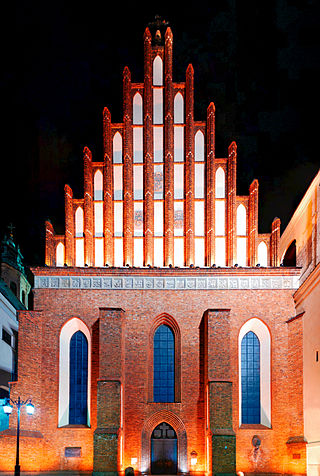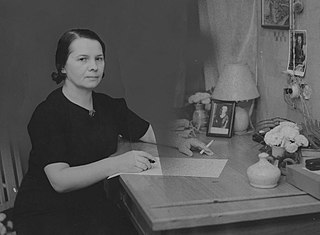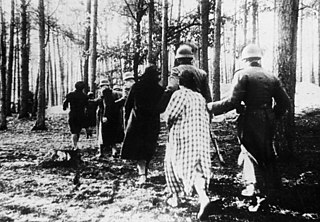
Serbia was a prison for women, located in Warsaw at 26 Dzielnej Street adjacent to the Pawiak prison. It was built by the Russian occupiers of Poland.

Serbia was a prison for women, located in Warsaw at 26 Dzielnej Street adjacent to the Pawiak prison. It was built by the Russian occupiers of Poland.
The building was built between 1830 and 1835 to be a criminal prison for women. From 1877 to 1878 it served as a military hospital, and acquired its name because of the Russo-Turkish War (1877–78) (also known as the Serbian war). After 1863 the building was a political prison for women, and among the prisoners were, Hanka Ordonówna, Ina Benita, Irena Iłłakowicz, Lidia Wysocka, Maja Berezowska, Maria Koszutska, Maria Rutkiewicz, Mary Berg, Nathalie Zand, Pola Gojawiczyńska, Teresa Bogusławska, Zofia Chądzyńska, and Zofia Kossak-Szczucka.
From 1939 to 1944, Serbia together with the adjacent Pawiak were seized by the Nazi Gestapo and continued to help in the repression of Warsaw. On 21 August 1944 the Germans blew up the two prisons.
After the war the area of women's prison was partially used for the construction of Marchlewskiego Street (today Jan Pawla II Avenue). In 1965, a plaque was placed commemorating the place which housed the "Serbia" prison.

Zofia Kossak-Szczucka was a Polish writer and World War II resistance fighter. She co-founded two wartime Polish organizations: Front for the Rebirth of Poland and Żegota, set up to assist Polish Jews to escape the Holocaust. In 1943, she was arrested by the Germans and sent to Auschwitz concentration camp, but survived the war.

The Warsaw concentration camp was a German concentration camp in occupied Poland during World War II. It was formed on the base of the now-nonexistent Gęsiówka prison, in what is today the Warsaw neighbourhood of Muranów, on the order of Reichsführer-SS Heinrich Himmler. The camp operated from July 1943 to August 1944.

Gęsiówka is the colloquial Polish name for a prison that once existed on Gęsia ("Goose") Street in Warsaw, Poland, and which, under German occupation during World War II, became a Nazi concentration camp.

Pawiak was a prison built in 1835 in Warsaw, Congress Poland.

Stefan Władysław Bryła was a Polish construction engineer and welding pioneer. He designed and built the first welded road bridge in the world.

St John's Archcathedral is a Catholic church within the Old Town precinct in Warsaw, Poland. The Brick Gothic structure stands on Świętojańska Street, adjacent to the Jesuit Church. St John's is one of three major cathedrals in the city, but it is the only temple that also possesses the title of an archcathedral. It is the mother church of the Archdiocese of Warsaw and one of Poland's national pantheons. Along with the old city, the church has been listed by UNESCO as a World Heritage Site.

Aleksandra Piłsudska was a Polish socialist and independence activist, member of Polish Socialist Party and Polish Military Organisation, the second wife of Józef Piłsudski.

Muranów is a neighbourhood in the districts of Śródmieście (Downtown) and Wola in central Warsaw, the capital of Poland. It was founded in the 17th century. The name is derived from the palace belonging to Simone Giuseppe Belotti, a Venetian architect, who originally came to Warsaw from the island of Murano. It is the northernmost neighbourhood of the downtown area.
Operation Wieniec was a large-scale World War II anti-Nazi Home Army operation. It took place on the night of 7 to 8 October 1942, targeting rail infrastructure near Warsaw. Similar operations, aimed at disrupting German transport and communications in occupied Poland, occurred in subsequent months and years, targeting railroads, bridges and supply depots, primarily near transport hubs such as Warsaw and Lublin.

Pola Gojawiczyńska, real name Apolonia Gojawiczyńska, née Koźniewska was a Polish writer.
Operation Heads was the code name for a series of assassinations of Nazi officials by the World War II Polish Resistance. Those targeted for assassination had been sentenced to death by Polish Underground Special Courts for crimes against Polish citizens during the World War II German occupation of Poland. The operation's code name, literally "Operation Little Heads", was a sardonic reference to the Totenkopf insignia on Nazi German SS uniforms and headgear.

Mausoleum of Struggle and Martyrdom is a museum in Warsaw, Poland. It is a branch of the Museum of Independence. The museum presents the conditions in which Polish patriots and resistance fighters were jailed by Nazi Germany during World War II.

Muzeum Więzienia "Pawiak" is a museum in Warsaw, Poland, established in 1965. It shows the history of Pawiak Prison which was notably used during the German occupation between 1939 and 1944.
Maria Rutkiewicz was a Polish communist and an editor. During the Nazi occupation of Poland, she was a radio operator with the Polish resistance.

Maria de Nisau née Vetulani was a Polish woman soldier, combatant for Poland's independence, and participant in the Polish-Ukrainian War and World War II. She was killed by the Germans during a massacre of the Warsaw Uprising hospitals, where she was being treated for injury she sustained as a member of the Polish resistance.

The Palmiry massacre was a series of mass executions carried out by Nazi German forces, during World War II, near the village of Palmiry in the Kampinos Forest northwest of Warsaw.

Zofia Praussowa was a Polish politician, activist of the Polish Socialist Party, member of Polish Sejm (1922–1930), labor inspector and feminist.

Hanka Sawicka, real name Hanna Krystyna Szapiro, pseudonym Hanka was a Polish communist of Jewish background active in the Polish underground, represented in Polish People's Republic propaganda as the first leader of the Union of Youth Struggle.
Executions in the ruins of the Warsaw Ghetto (1943–1944) – mass executions of Polish Political prisoners and people of Jewish descent carried out secretly by German occupiers in the ruins of the Warsaw Ghetto.

Anna Maria Hinel was a Polish girl scout, activist of the underground independence movement during World War II, author of a diary from the German Nazi occupation.